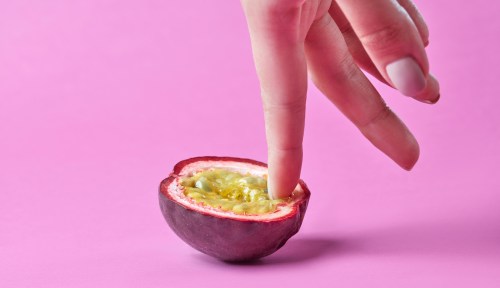Our editors independently select these products. Making a purchase through our links may earn Well+Good a commission
Yes, There’s More Than One Type of Monogamy
Yes, there's more than one. Monogamous relationships type and style. We talked to experts about what makes each kind of monogamy unique.

Even in a world that’s growing more inclusive by the day, many of us still embrace the concept of monogamy in a strictly binary framework: You are either monogamous or you are not. “From the day we are born, there’s an overarching narrative that one day we’ll grow up, fall in love with someone of the ‘opposite’ gender, get married and be monogamous,” says LGBTQ+ activist Robyn Ochs, editor of the anthology Getting Bi: Voices of Bisexuals Around the World and Recognize. (“Opposite” is in quotations because gender isn’t organized into a neat binary given that there are more than two genders). That restrictive continuum neither leaves room for different types of monogamy that are more nuanced or any other type of relationship structure.
Experts in This Article
founder of The Relationship Place
Robyn Ochs is an educator, speaker, grassroots activist, and editor of Bi Women Quarterly and two anthologies: the 42-country collection Getting Bi: Voices of Bisexuals Around the World and RECOGNIZE: The Voices of Bisexual Men.
licensed marriage and family therapist and founder of Prospect Therapy
For Ochs, and many other folks who identify as queer and LGBTQ+, that narrative took a plot twist. “Growing up, it never once crossed my mind that I wouldn’t be with a man, monogamously, but then I fell in love with a woman and came out as bisexual,” she says. That’s when she began unpacking why she haphazardly accepted the understanding of monogamy that was foisted on her rather than exploring what makes better sense for the scope of her own life.
“I started to interrogate why I was in a monogamous relationship. I looked within myself, read about polyamory, talked with my non-monogamous friends, and did the work to unlearn what I was told growing up: that monogamy was and is the only way and the right way to structure a relationship,” she says. Ultimately, she found there are actually two types of monogamy: radical monogamy and reflexive monogamy.
How many types of monogamy are there?
The critical difference between the two types of monogamy—radical monogamy and reflexive monogamy—is that one involves actively seeking out a monogamous relationship, while the other involves falling into a monogamous relationship.
“Reflexive monogamy is when you’ve internalized messages about monogamy being the way to date and relate, and you are, therefore, monogamous,” she says. “Radical monogamy is when you decide to unpack those cultural biases, ask yourself what type of relationship actually works best for you, and then choose monogamy.
In other words, radical monogamy is monogamy on purpose. “What makes it radical is that you have considered, and perhaps even participated in, other relationship structures before arriving at a deliberate choice for monogamy,” says Sara Stanizai, a therapist and founder of Prospect Therapy, a private therapy practice that focuses on serving first-generation American and immigrant communities. “The term implies that an internal and/or exploration has taken place and that monogamy is a conscious choice.”
Reflexive monogamy, Stanizai adds, is lovingly referred to as the monogamy of past generations. “Reflexive monogamy is unquestioned, unexamined, and decidedly not a choice,” she says.
What is monogamy?
To practice radical monogamy, it’s important to first define monogamous. Stanizai says monogamous relationships are “romantic and sexual exclusivity between two people.” She adds, “It is founded on the idea that love and commitment are finite and that sharing those with more than one person means each person gets less of you.”
An example of monogamy is two partnered people who only have romantic, emotional, sexual, and intimate connection with each other, Stanizai says. However, she notes that “intimate” is defined differently by each person. For instance, having a platonic “work husband” may be considered emotionally cheating or watching pornography may be a form of betrayal for some people.
Types of Non-Monogamy
The opposite of monogamy then is non-monogamy. The main difference between monogamy and non-monogamy, Stanizai explains, is, “the divestment from the idea that sharing more of yourself with more people means that each person gets less of you. Instead, non-monogamous people generally understand the idea that sharing more relationships creates more intimacy and love to go around.”
There are many labels and types of non-monogamy and Stanizai says it’s up to each person to define it for themselves. Think of non-monogamy as an umbrella term which can include only dating others but being sexually exclusive with one partner, open relationships, monogamous couples who have sexual encounters with others (aka swingers), or polyamory.
How To Practice Radical Monogamy
Whether you’re already in a closed, committed relationship or more single than a dollar bill, you can embrace radical monogamy into your relationship structure. The first step, though, is to learn about all relationship structures, says therapist Dana McNeil, LMFT. Talking with your friends about how they came into their relationship structure of choice, and reading up on recommended material can help. McNeil suggests More than Two: A Practical Guide To Ethical Monogamy, The Ethical Slut: A Practical Guide To Polyamory, Open Relationships and Other Freedoms, and PolyInfo.org as great sources. And on the podcast front, Kinky, Nerdy, and Poly and Black Radical Queer are worth a listen, she says.
Seeking a therapist who specializes in polyamory and LGBTQ+ issues is also a great avenue for information. “A good therapist can help you make a pros and cons list about the advantages and disadvantages of being in a monogamous or non-monogamous relationship, for you,” McNeil says, adding that they can help you understand what to do with that information you unravel, and then decide how to move forward.
If after putting in the work, you decide monogamy works best for you, you fall into the radical-monogamy camp of relationship structures. Ultimately, Ochs says, the goal of this work is to realize that beyond the two types of monogamy, there’s not a single relationship structure that will work for every person. Because of this, it’s key to suss out what works uniquely well for you.
Types of Monogamy FAQs
Is monogamy possible? Does it work?
The short answer: yes.
“It absolutely works and is an extremely satisfying, healing, and beneficial relationship structure,” Stanizai says. “It requires honesty, communication, and shared values. It helps people create meaning, heal attachment injuries, and builds community.” Polyamory, she adds, also does the same.
Is there a way a monogamous person can be polyamorous?
According to Stanizai, yes, people that consider themselves a monogamous person can do the work to learn what it means for them and begin polyamorous relationships. However, she says, there is a caveat.
“I often say polyamory is not about the hook up. You are not necessarily going to be successful long-term if the only reason you are considering polyamory is so you can hook up with a specific person,” she says. “The reason behind this is that you are not changing the way you view relationship structures, you’re just changing the behavior.”
What is serial monogamy?
Someone being referred to as a “serial monogamist” is something you often hear. Stanizai explains serial monogamy is when someone stays in exclusive relationships of any length, one after another.
What is toxic monogamy?
“Toxic monogamy is when the tenets of monogamy are taken to an extreme,” Stanizai says, by using monogamy to justify coercive or abusive behavior. This can include going through someone’s phone messages or dictating who they can be friends with. Stanizai adds that with toxic monogamy, jealousy is seen as a strength and one partner protects the exclusivity of their relationship to their partner’s detriment.
Is monogamy suitable for everyone?
Lastly, Stanizai says monogamy is just as suitable for everyone as polyamory. Again, she emphasizes that the key is that each person decides their relationship philosophy and then designs relationships that suit their personal needs and capacity.
Sign Up for Our Daily Newsletter
Get all the latest in wellness, trends, food, fitness, beauty, and more delivered right to your inbox.
Got it, you've been added to our email list.










